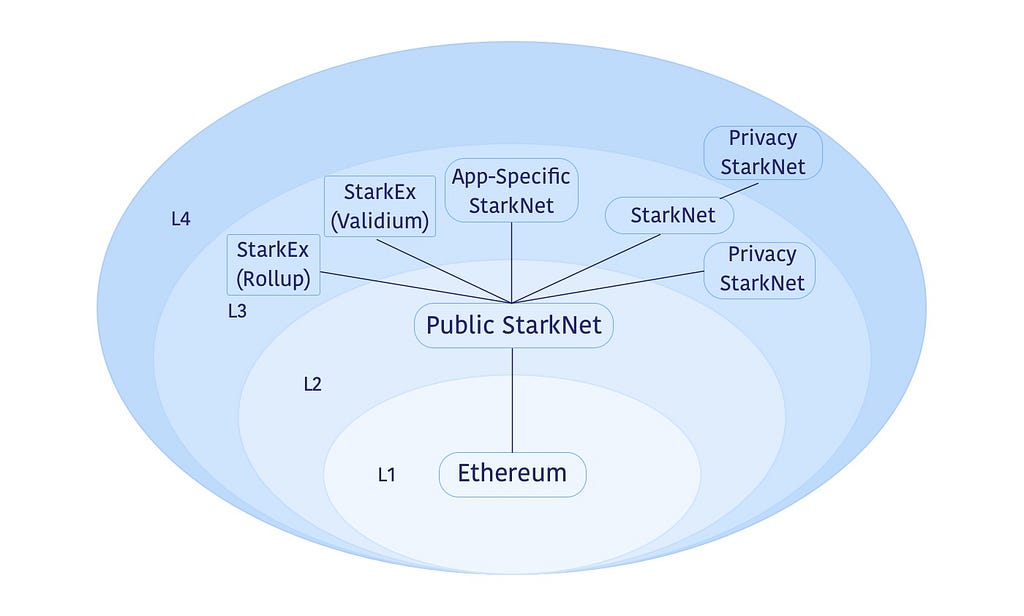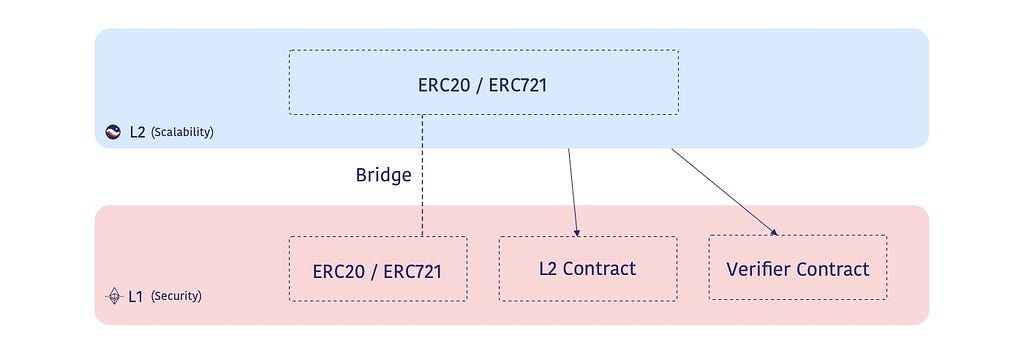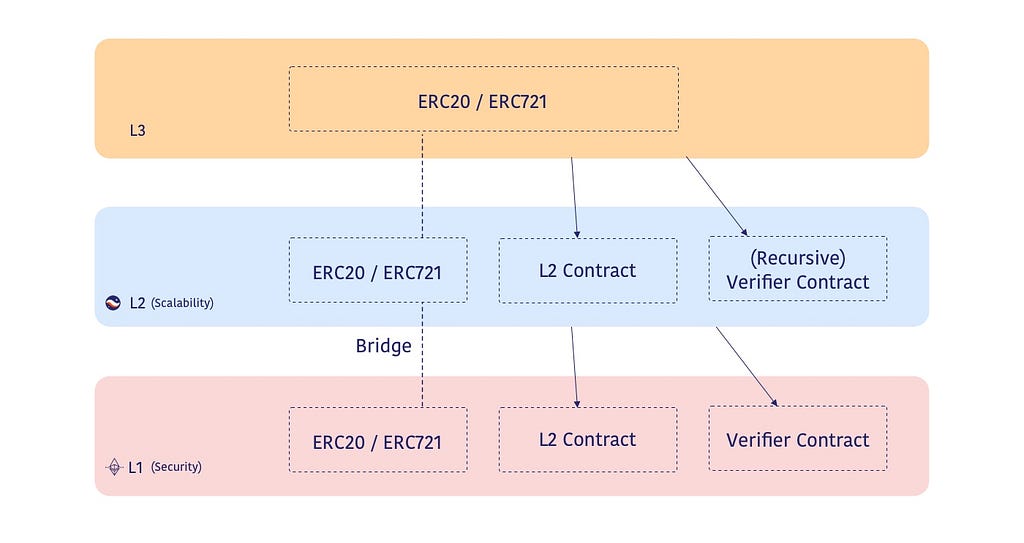StarkWare: Why does Ethereum need Layer 3 solutions?
Source: StarkWare Blog
Original Title: "Fractal Scaling: From L2 to L3"
Compiled by: Gu Yu, Chain Catcher
Why L3?
The high cost of Ethereum transactions has prompted it to become the settlement layer for L2. We believe that in the near future, due to significantly reduced transaction costs, increasing support for DeFi tools, and enhanced liquidity provided by L2, end users will conduct most of their activities on L2.
L2s enhance scalability by lowering gas costs per transaction and increasing transaction throughput. At the same time, L2s retain the benefits of decentralization, general logic, and composability. However, certain applications require specific customizations that are best served by a new independent layer: enter L3!
L3 is related to L2 just as L2 is related to L1. As long as L2 can support validator smart contracts, L3 can be implemented using validity proofs. When L2 also uses validity proofs submitted to L1, as StarkNet does, this becomes a very elegant recursive structure where the compression advantages of L2 proofs are multiplied by the compression advantages of L3 proofs. In other words, if the cost at each layer is reduced by a factor of 1000, then the cost of L3 can be reduced by a factor of 1,000,000 compared to L1—while still retaining the security of L1.
Imagine transactions costing only a tiny fraction of gas!
The main advantages of L3 are:
First, achieving ultra-scalability through the multiplicative effect of recursive proofs.
Second, better control by application designers of the technology stack:
a: More deterministic performance and costs;
b: Customizable data availability models (e.g., based on Validium or application-specific on-chain data compression),
C: Faster functionality and technical speed (e.g., introducing new features that are not yet fully available).
Third, privacy, such as zero-knowledge proofs applied to privacy-preserving transactions on public L2.
Fourth, cheaper/simpler L2-L3 interoperability. The cross-chain channels currently used between L1 and L2 are very expensive. In contrast, due to the cost-effectiveness of L2, when these processes are applied to L3, they are not only very attractive but also easy to implement. While the latency of moving assets between L2 and L3 may be longer than the latency between applications deployed on the same L2, the costs and throughput are comparable.
Fifth, cheaper/simpler L3-L3 interoperability. Independent L3s will interoperate through L2 rather than L1. L2 is clearly expected to be cheaper than its L1. Without L3, these would all act as L2, thus requiring interoperability through relatively expensive L1.
Sixth, L3 as the "Kusama" network of L2: New innovations may be tested on L3 before being made public on L2 or L3 (similar to the role Kusama plays in Polkadot).
L3s and Fractal Layering
Multiple L3s will be built on top of L2. Additionally, for fractal layering solutions, additional layers (L4, etc.) can be built on L3.
 Figure 1: Layered Ecosystem
Figure 1: Layered Ecosystem
Figure 1 illustrates an example of such an ecosystem. Its L3 includes:
- StarkNet with Validium data availability, widely used for applications that are extremely sensitive to pricing.
- Application-specific StarkNet systems customized for better application performance, for example, by adopting specified storage structures or data availability compression.
- StarkEx systems (e.g., systems serving dYdX, Sorare, Immutable, and DeversiFi) with Validium or Rollup data availability, bringing proven scalability advantages to StarkNet immediately.
- Privacy StarkNet instances (also serving as L4 in this case) allow for privacy-preserving transactions without including them in the public StarkNet.
Building Blocks of L3 Solutions
Figure 2 describes a classic L2 architecture that includes the following components:
- Smart contracts tracking the L2 state root on L1 (e.g., StarkNet smart contracts on Ethereum).
- For validity proof-based L2, validator smart contracts are used to verify the validity of state transition proofs.
- Bridging contracts on L1 manage deposits and withdrawals of tokens into and out of L2.
- Token contracts on L2 act as counterparts to L1 token contracts (e.g., ERC20, ERC721).
 Figure 2: Building Blocks of L2
Figure 2: Building Blocks of L2
Figure 3 illustrates the relationship between L3 and its underlying L2 and L1. By implementing state tracking and validator smart contracts on L2, L3 can operate securely on L2.
 Figure 3: Building Blocks of L3
Figure 3: Building Blocks of L3
Conclusion
L3 promises ultra-scalability, better control of the technology stack to meet various needs, and privacy, while maintaining the security guarantees provided by Ethereum (L1). The recursive concept it adopts can be extended to additional layers of fractal layering solutions.
StarkEx currently operates as L2 and will migrate to L3. Additionally, instances of StarkNet will be provided as L3.
Thanks to Polynya and Alex Connolly (Immutable) for their comments and feedback on this article. Special thanks to Pierre Duperrin (Sorare) for his valuable insights.









